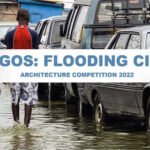The eleventh edition of the Barbara Cappochin International Architecture Biennale kicks off, now in its twentieth year The 11th edition of the Barbara Cappochin International Architecture Biennale kicks off with the opening of registration for the International Architecture Prize. The purpose of the Prize is to bring out the central role and responsibility of architecture in the process of transforming cities and territories. The Barbara Cappochin Foundation has always emphasized the close link between architecture and quality of life, rewarding the ability to generate quality wisely and with attention to both context and environment. The initiative, promoted by the Barbara Cappochin Foundation in collaboration with the Order of Architects Planners Landscape Architects and Conservators of the Province of Padua, Municipality of Padua, and publicized worldwide at the World Congress of Architects, held in Copenhagen from July 2 to 6, has seen, overall in previous editions, the participation of more than 3,000 projects with works from 80 countries on all continents.
Works completed between January 1, 2020, and January 31, 2024, belonging to the following categories are eligible for the Prize (entries close next January 31, 2024, and are free of charge):
– public and private residential architecture;
– commercial, office, mixed-use architecture;
– public architecture;
– landscape architecture; urban redevelopment and regeneration.
The International Jury will meet in Padua on February 22 and 23, 2024; the award ceremony in the fairy-tale Cava Arcari and other final events of the 11th edition of the Biennale will be held in May and June 2024. The international winner will be awarded a prize of €20,000, while €3,000 will be the prize awarded to the regional prize winner. The best 40 international works and the best 10 regional works will be exhibited in Padua’s Piazza Cavour from June 7 to July 24, 2024, on the “Tables of Architecture” designed by Renzo Piano and created by Laboratorio Morseletto for Architecture. All works will be published in the traditional Prize catalog.
On May 13, 2024 at the Padua Convention Center, “Architecture Meets School” meeting will be held between students of secondary schools in Padua, Rovigo and provinces and a great international architect to emphasize the influence of architecture in everyday life, thanks to the contribution of the Cariparo Foundation. June 7 will see the lectures of the winners and mentions at the San Gaetano Cultural Center and the inauguration of the Tables of Architecture, and June 8 at the Aula Magna of the University of Padua sees the International Conferences with focus on small towns following the example of the French “Petites villes de demain.”
The collaboration and joining of forces between the Barbara Cappochin Foundation, the Cariparo Foundation and the University of Padua has given way to the creation of a major exhibition to be held at Palazzo Monte di Pietà in Padua, the headquarters of the Cariparo Foundation, dedicated to Daniele Calabi (Verona 1906 – Venice 1964), an architect who was very active in Padua and the Veneto region with a human and personal history that tragically recounts a sad page of our history, unfortunately still highly topical today. Calabi, a Jew, before the racial laws received many commissions for the design and construction of public works. Later his religious affiliation also precluded him from participating in the inauguration of the Asiago Observatory, a grandiose work he had designed and worked on with that great attention and care to detail that distinguished him. Calabi was an architect with an almost mystical adoration for materials and materials, especially those traditional and linked to the history of the area. For the Observatory, he had in fact chosen a stone quarried from local, pinkish-gray quarries.
But on that day, at the inauguration in Asiago, he was not there, and in Rector Carlo Anti’s speech Daniele’s name was not even mentioned, because he was Jewish. With this great exhibition, “Daniele Calabi in Padua – City and Architecture after World War II,” we want to give back to the city a path of discovery of the great works created by this architect, but above all we want to give Calabi back to his city, to history and give him justice. The exhibition, starting from the centrality of the figure of the engineer-architect, will investigate the architectural and urban context of Padua after World War II, particularly the years in which the most intense transformations and projects for the development of the city were concentrated,
and will be organized with the display of original pieces such as technical drawings, executives, sketches, and photographs, placed on special showcases; focusing on the theme of architecture over time: a comparison, on a photographic basis, between the projects at the time of their construction (through original drawings and photos) and how they look in their present state.
As a corollary to the exhibition, a series of lectures and seminars are planned to be held at the University of Padua in close synergy with the teaching activities (Degree Course in Building Engineering & Architecture of the ICEA Department, UNIPD and History of Contemporary Architecture laboratory) as well as the design and construction of temporary pavilions, in front of Palazzo Moroni and Cà Lando entrusted to university students, reinterpreting Architect Calabi’s architecture and details, so as to serve also as spaces for meeting and studying his works in the context of the city of Padua, places open and usable by citizens and tourists; finally, the publication on the works and life of the architect spent for some years in Brazil as a refugee, being Jewish, because of the racial laws. The Foundation The purpose of the “Barbara Cappochin” Foundation is to keep alive the memory of Barbara, a young student of the Faculty of Architecture I.U.A.V. in Venice, through the promotion of quality in architecture.








